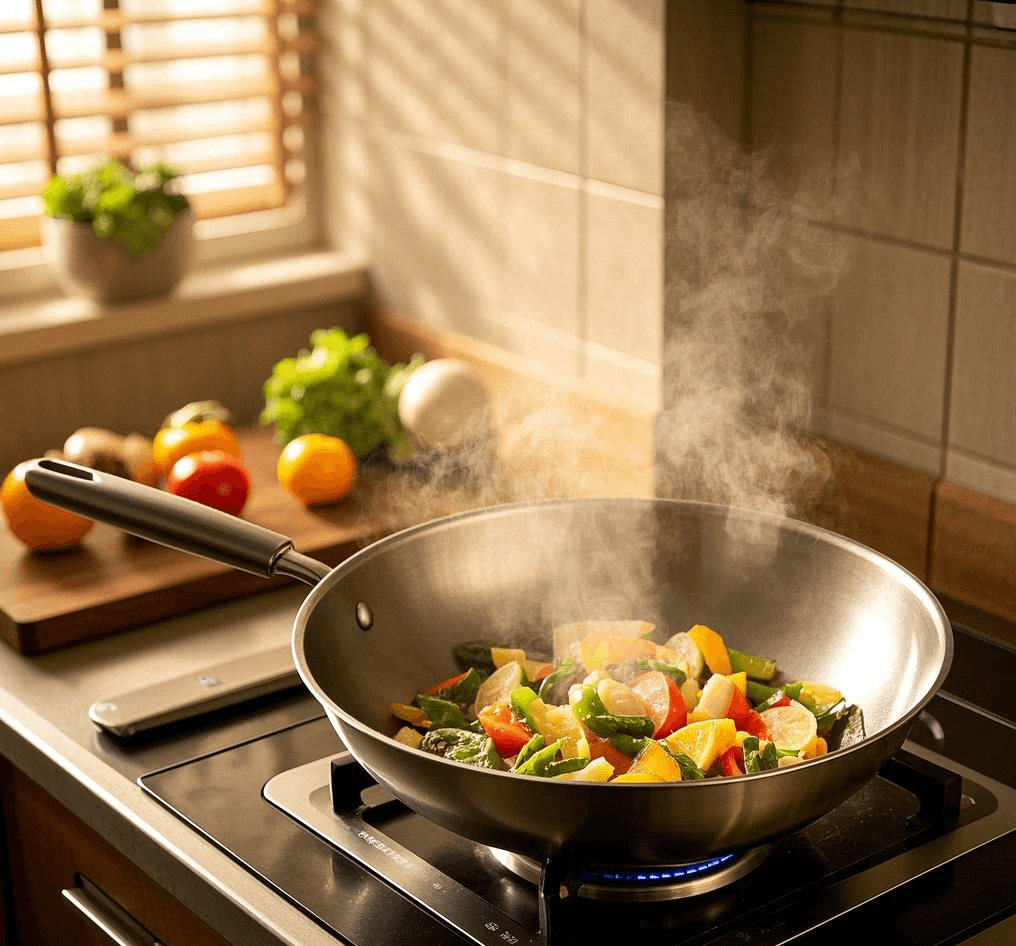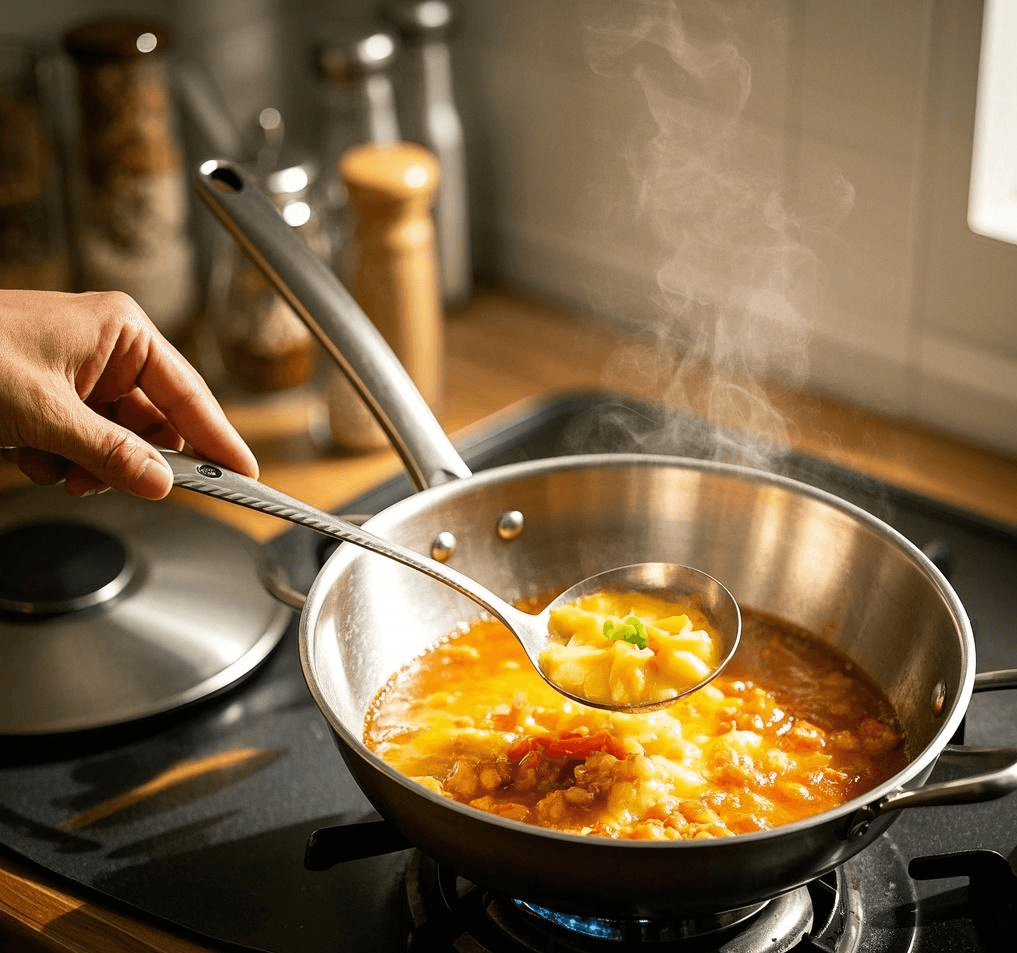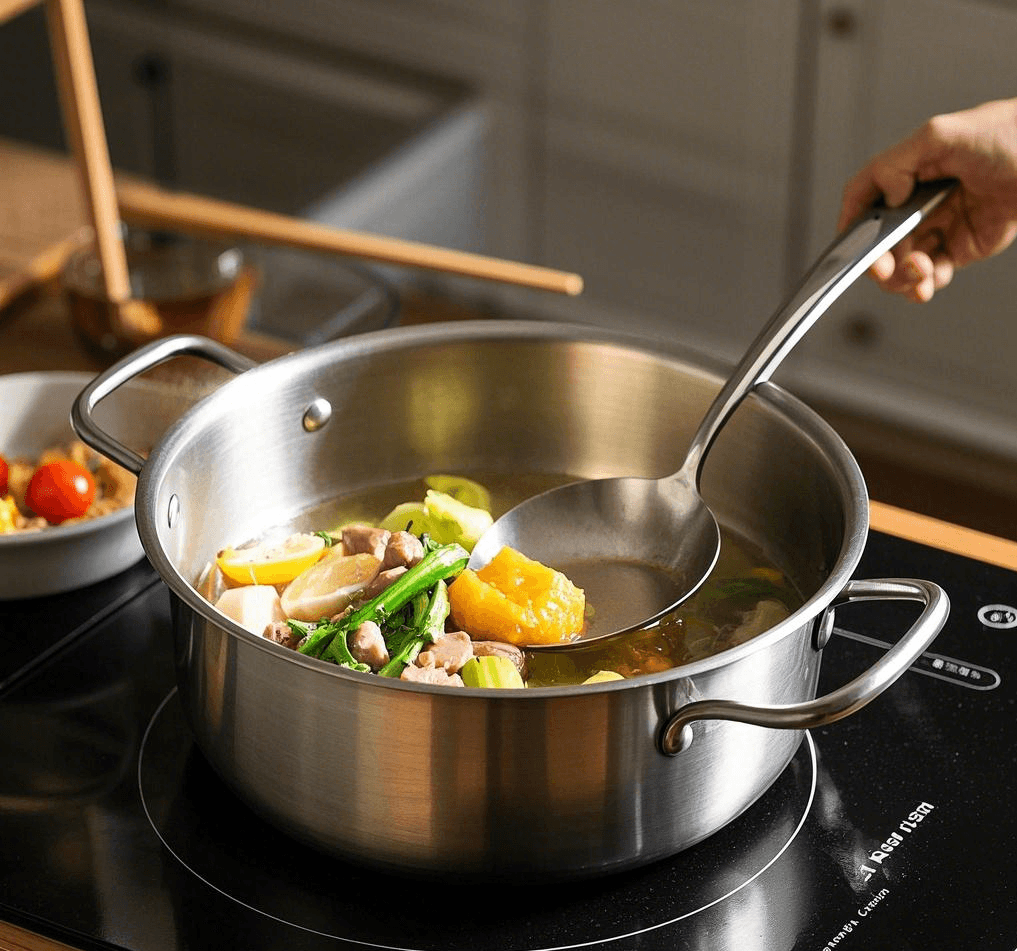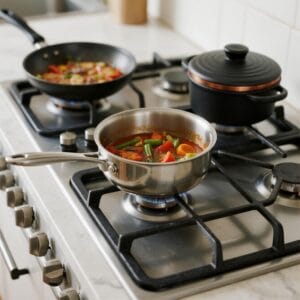Introduction: Weighing the Impact of Triply Cookware
Triply cookware, with its three-layer design of stainless steel and a conductive core like aluminum or copper, is lauded for its cooking prowess, but its weight can significantly influence how it performs in the kitchen. While heft often signals quality, it also affects handling and comfort. So, how does the weight of triply cookware impact its usability? This article explores the pros and cons of its weight to help you assess its practical fit.
The weight of triply cookware impacts usability by enhancing stability and heat retention while potentially challenging maneuverability and comfort, depending on user needs.
Let’s break down how weight shapes your experience with triply cookware.

How Does Weight Enhance Stability During Cooking?
The heft of triply cookware contributes to its stability, making it a reliable choice for various tasks.
- Sturdy Base: A heavier pan sits firmly on the stovetop, resisting tipping or sliding—crucial when stirring vigorously or cooking large batches. The Cookware Manufacturers Association notes this as a quality indicator.
- Heat Distribution: Thicker, heavier layers ensure even heat spread, reducing hot spots, as seen in brands like All-Clad.
- Balance Benefit: Triply Circle Titanium designs heavier cookware with balanced proportions for steady performance.
Heavier triply cookware offers stability and consistent heating, boosting control in the kitchen.
Why Does Weight Improve Heat Retention?
The weight of triply cookware, tied to its thick construction, enhances its ability to hold heat, improving cooking efficiency.
- Thermal Mass: Heavier layers retain heat longer, keeping food warm after the burner’s turned down—ideal for simmering sauces or serving hot dishes.
- Energy Savings: This residual heat reduces the need for constant high heat, cutting energy use, a point emphasized.
- Slow Cooking: Weighty triply pots excel at low-and-slow techniques like braising, maintaining steady temperatures.
Increased weight bolsters heat retention, making triply cookware efficient and versatile.
How Does Weight Affect Maneuverability in the Kitchen?
While beneficial for performance, the weight of triply cookware can make it harder to handle, impacting usability.
- Lifting Challenges: Heavier pans—especially when full—require more effort to lift or tilt, potentially straining wrists or arms, as noted by Consumer Reports.
- Quick Tasks: Techniques like sautéing or flipping, which demand agility, may feel cumbersome with weighty cookware compared to lighter alternatives.
- Ergonomic Design: Brands like Triply Circle Titanium offset this with ergonomic handles, but heft remains a factor.
The weight of triply cookware can hinder maneuverability, posing a challenge for dynamic cooking.
What Impact Does Weight Have on User Comfort?
The physical demands of triply cookware’s weight influence comfort, particularly over extended use.
- Fatigue Factor: Prolonged cooking sessions with heavy pots might tire users, especially those with limited strength or mobility—something lighter non-stick pans avoid.
- Handle Support: Well-designed, balanced handles, as in Demeyere’s offerings, mitigate strain, but weight still affects overall feel.
- User Variation: Comfort varies by individual—some prefer the substantial feel, while others find it taxing.
Triply cookware’s weight can reduce comfort for some, depending on physical ability and preferences.
How Can Consumers Balance Weight with Usability Needs?
Finding the right weight in triply cookware involves matching it to your cooking style and physical capacity.
- Size Selection: Opt for smaller pieces (e.g., 8-inch skillets) if weight is a concern, reserving heavier stockpots for occasional use.
- Helper Handles: Larger triply items with secondary handles ease lifting, enhancing usability without sacrificing quality.
- Test Before Buying: Lift and handle cookware in-store or check specs online—Triply Circle Titanium suggests this to ensure a good fit.

Balancing triply cookware weight with personal needs ensures usability aligns with its benefits.
Claim: Weight Shapes Triply Cookware’s Kitchen Role
The weight of triply cookware enhances stability and heat retention but can complicate maneuverability and comfort, creating a trade-off that varies by user. Recognizing its impact helps tailor your choice to your kitchen demands.
Conclusion: Weighing Triply Cookware for Your Needs
In my view, the weight of triply cookware, as exemplified by brands like Triply Circle Titanium, is a double-edged sword—offering performance advantages while requiring thoughtful handling as of March 03, 2025. By prioritizing stability or ease based on your habits, you can harness its strengths without compromising usability. Choose wisely, and triply cookware’s weight becomes an asset, not a burden.






